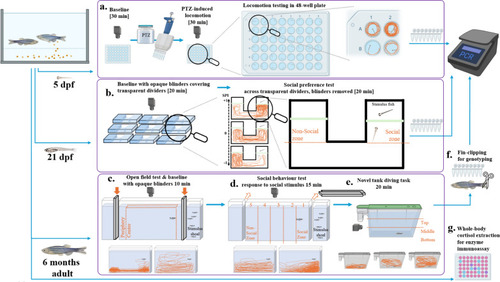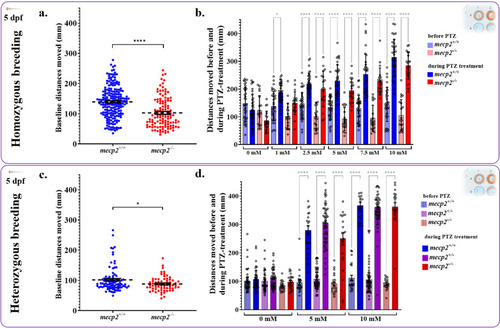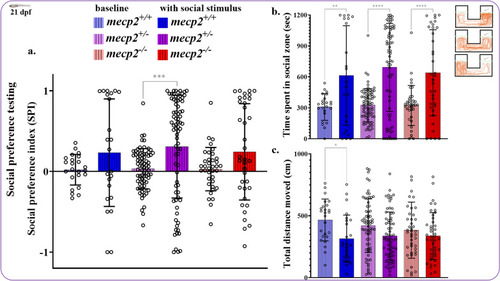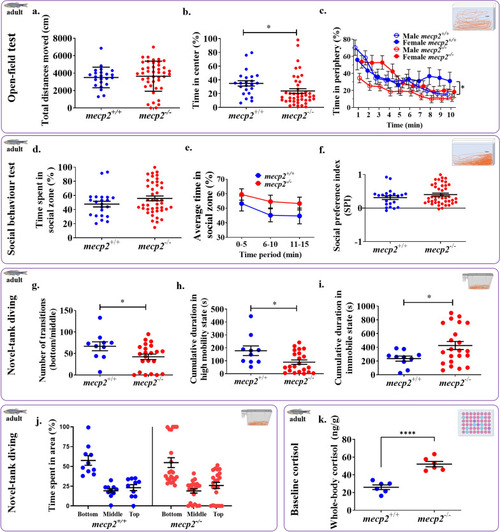- Title
-
Zebrafish mecp2 null-mutation increases anxiety and cortisol levels but no change in adult social preference and larval chemically-induced hyperlocomotion
- Authors
- Shams, S., Cronell, P., Landin, J., Pietri, T., Gimdal, A.E., Kettunen, P., Westberg, L.
- Source
- Full text @ BMC Neurosci.
|
Schematic representation of the experimental protocol at 5 days post-fertilization (dpf), 21 dpf, and 6-months old adult fish. Experiments done at the three ages are separated and denoted with purple outline. Blue arrows show timeline of procedures while orange dotted lines represent virtual division of testing arenas into relevant areas. For 5 dpf larval fish ( |
|
Larval locomotion behaviour was similarly affected in PHENOTYPE:
|
|
Social preference index, time spent in the social zone, and total distance moved by 21 dpf zebrafish during baseline and social stimulus phases. Social preference ( PHENOTYPE:
|
|
Anxiety-related behaviours and whole-body cortisol levels were altered in adult PHENOTYPE:
|




